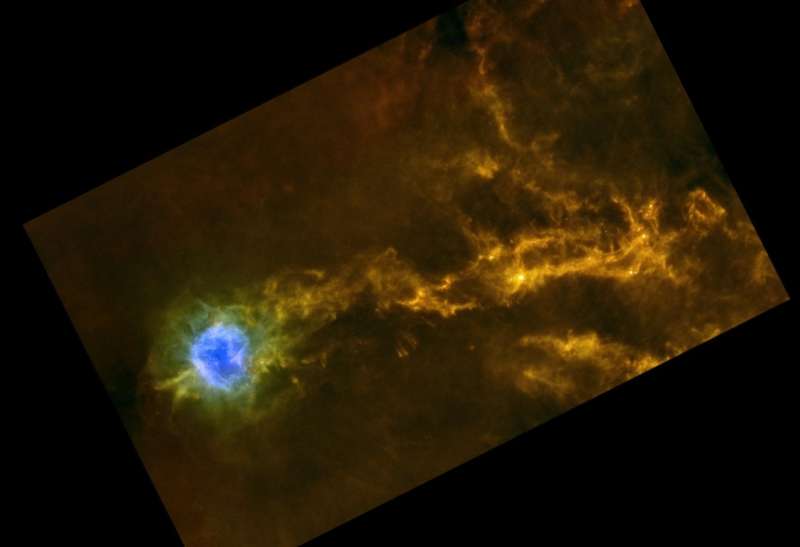Explanation: In this remarkable infrared skyscape of interstellar clouds adrift in the high flying constellation Cygnus, the eye is drawn to the Cocoon Nebula. Also known as IC5146, the dusty star forming region is shown in blue hues in the Herschel Space Observatory false color image, at wavelengths more than 100 times longer than visible red light. And while visible light images show the Cocoon nebula at the end of long dark nebula Barnard 168, Hershel's infrared view finds the cosmic Cocoon punctuating a trail of filamentary clouds of glowing dust. The dusty filaments have widths that suggest they are formed as shockwaves from exploding stars travel through the medium, sweeping up and compressing the interstellar dust and gas. Herschel data also indicate stars are forming along the dusty filaments. The Cocoon Nebula itself is about 15 light-years wide and 4,000 light-years away.
1999 2000 2001 2002 2003 2004 2005 2006 2007 2008 2009 2010 2011 2012 2013 2014 2015 2016 2017 2018 2019 2020 2021 2022 2023 2024 2025 |
Yanvar' Fevral' Mart Aprel' Mai Iyun' Iyul' Avgust Sentyabr' Oktyabr' Noyabr' Dekabr' |
NASA Web Site Statements, Warnings, and Disclaimers
NASA Official: Jay Norris. Specific rights apply.
A service of: LHEA at NASA / GSFC
& Michigan Tech. U.
|
Publikacii s klyuchevymi slovami:
nebula - interstellar medium - interstellar dust - star formation - infrared - tumannost' Kokon - Mezhzvezdnaya pyl' - Mezhzvezdnaya sreda - infrakrasnye nablyudeniya
Publikacii so slovami: nebula - interstellar medium - interstellar dust - star formation - infrared - tumannost' Kokon - Mezhzvezdnaya pyl' - Mezhzvezdnaya sreda - infrakrasnye nablyudeniya | |
Sm. takzhe:
Vse publikacii na tu zhe temu >> | |
Mneniya chitatelei [13]
